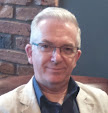 It is often asked, how can anyone fall for this or that cult? Behind the question is an assumption; these people are gullible. But they are neither gullible, nor are they dumb. In fact, most people who join cults are intelligent and capable. That much is clear from the fact they so often come along asking important questions about life.
It is often asked, how can anyone fall for this or that cult? Behind the question is an assumption; these people are gullible. But they are neither gullible, nor are they dumb. In fact, most people who join cults are intelligent and capable. That much is clear from the fact they so often come along asking important questions about life.
From our vantage point we might compare a cult’s teaching with our own experience and understanding, but that is not where the cult member is standing. Imagine a scale of 1-10:
1------2------3------4------5------6------7------8------9------10
Number ten represents the complete cult experience. Number one represents what most regard as the received orthodoxy of the faith, where we stand when we agree on the fundamentals. It is from this viewpoint that you survey the cult scene and judge others ‘dumb for falling for this stuff.’ The ‘others’ you are looking at stand, shall we say, at point seven on this scale.
It is well to remember the person whose judgement you are questioning didn’t start at number seven. Indeed, they may well have once stood where you are, so how did they get to where they are today? They began by going from number one to number two which, while admittedly rather unconventional, nevertheless has a lot going for it.
It’s close enough to the truth (number 1) to have a halo effect, to be familiar such that we don’t question, we too readily trust. It is also just far enough from established orthodoxy to be exciting, intriguing, worth investigation. The modern church is awash with examples of this phenomenon; apostles, prophets, signs and wonders, worshiptainment, ‘touch the screen and feel my sincerity.’ The local Mormon Church, or the local Kingdom Hall typically achieve this halo effect by being warm and welcoming to visitors, by appearing a lot like church.
It is in the process of membership that a person moves along the scale until they get to the higher numbers, closer to the full cult experience. When we witness to them it is easy to stand at number one, the place of orthodox, where they perhaps started, and wonder in frustration why they simply can’t ‘see it!’ The reason they don’t immediately see the error compared to the truth is because of another phenomenon – baseline shifting.
Our baseline in this example is at number one, the established orthodoxy. Baseline shifting describes a gradual change in the accepted norms due to a failure to understand, to even remember the accepted standards of, in our example, the wider faith group. When we look at someone at number seven, we compare that position to our still established baseline. For them, however, the baseline has shifted repeatedly, until the person’s baseline is number seven, or at best number six.
So, they have started with something familiar enough to win their trust, but novel and esoteric enough to be intriguing (the halo effect) and ended with a complete shift in their baseline such that, had they seen at the beginning all that would develop they might never have taken the journey.
How many Jehovah’s Witnesses could tell the same story as they walk ever so slowly to the next door to knock softly in the hope...well, you know what I mean. I wonder how many ask, ‘How did I get here?’
Be patient, start from where they are and don’t expect them to start where you are. Don’t take anything for granted. Just because they hold a Bible doesn’t mean they have any idea how to use and understand it, it’s authority, it’s message. Speak grace and bring them to the cross to see what God has done in Christ. Above all, don’t witness for results, this is a marathon not a sprint, but witness for faithfulness’ sake, for the one who called us to be his witnesses.


Comments